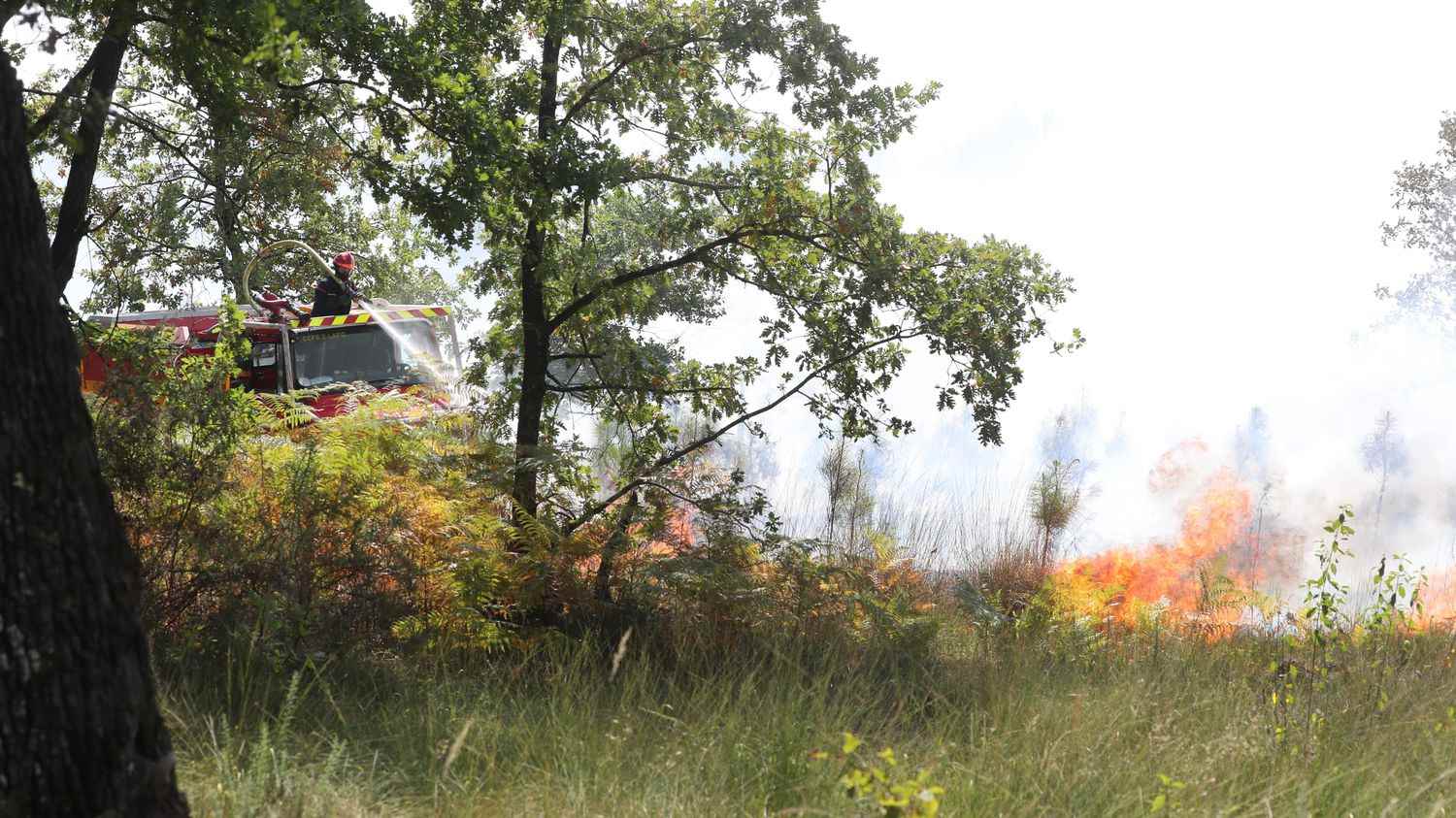Each forest has its specificities, and that of Landiras in Gironde is a good example: a Landes forest with 90% of maritime pines, exploited for their wood.
>> Fight against forest fires: follow the evolution of the situation in our direct
But such a homogeneous forest represents a risk according to Jonathan Lenoir, researcher at the CNRS: “Most of the Landes forests are monospecific, very homogeneous in terms of composition and sometimes also in terms of the structure of their stand. When a fire breaks out, it can spread easily, because there is no not in the landscape of elements that could form a firewall, or limit the progression of the fire.”
“Discontinuities” should be created in the Landes forest, capable of slowing down the flames. This can be cleared areas, tracks, but also other tree species. The cork oak, for example, deserves our full attention. “It’s an interesting species.explains Jonathan Lenoir, because it is fire resistant thanks to its very thick bark, and because it is native: it is found in the south of France, you don’t need to look very far for it.”
“In association with the maritime pine, the cork oak would make islets, barriers to limit the progression of the fire. And in addition, the cork oak will survive a possible fire and remain in the landscape.”
Jonathan Lenoirat franceinfo
Another recommendation, which again concerns the Landes forest: the restoration of wetlands. They were present before the draining of the marshes ordered more than 150 years ago by Napoleon III.
Individuals, too, have their role to play. Those who live near forests know it: they have a legal obligation to clear brush. But according to a Senate report released last week, this obligation is still too little applied. The president of the Nouvelle-Aquitaine region, Alain Rousset, recognizes this, and according to him, it is necessary to rethink the planning of the territory: “We have to think in terms of more bocage forests, maintained edges planted with hardwoods, which will be more resistant to fire.”
“We must also review our global roadmap on global warming, with a 2030 target. 2050 is too far!”
Alain Roussetat franceinfo
With global warming, the risk of fires will indeed increase. But it should also be remembered: some 90% of fires are of human origin. Raising awareness is also a recommendation of the Senate report.
